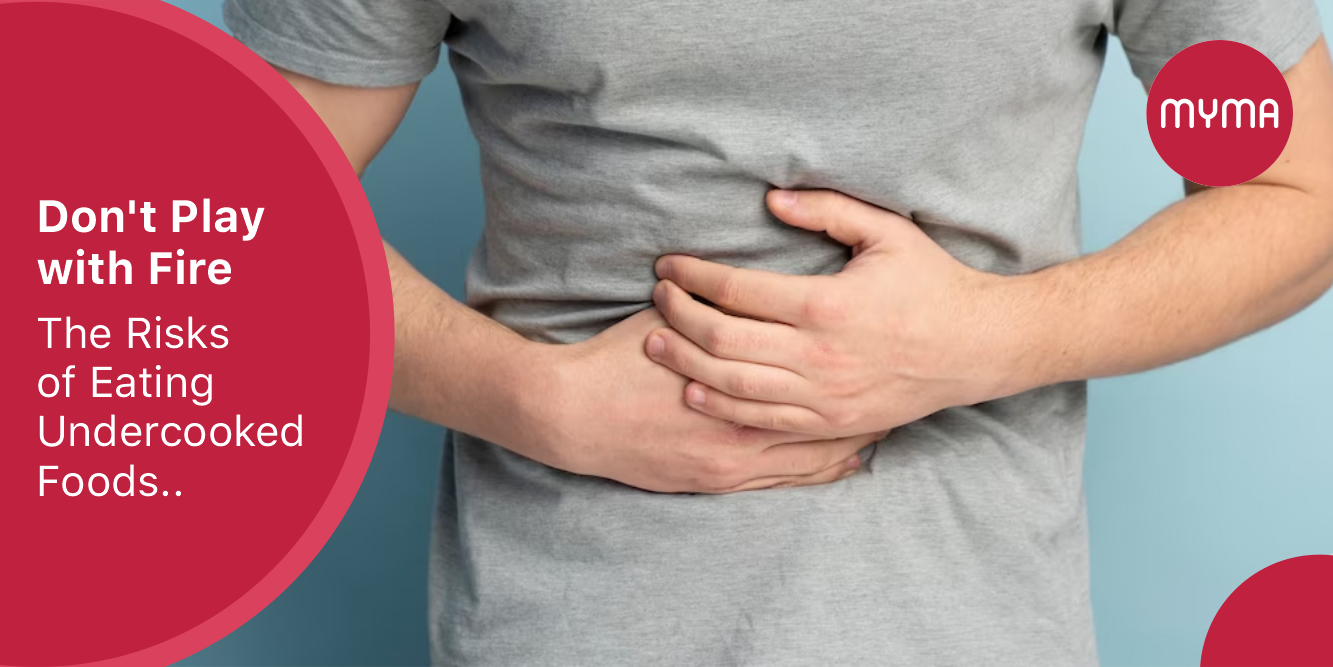We’ve all heard it before – “Make sure you cook your food properly!” But why is it so important to avoid undercooked foods? In this blog post, we’ll be discussing the dangers of consuming undercooked foods, and why it’s crucial to properly cook your food before consuming it.
1: What are undercooked foods?
Before we dive into the dangers of undercooked foods, let’s define what it actually means for food to be “undercooked”. Simply put, undercooked foods are foods that have not been cooked to the appropriate temperature, leaving them potentially unsafe to consume. This can be caused by a variety of factors, such as incorrect cooking time or temperature, lack of experience or knowledge about proper cooking techniques, or simply being in a rush.
2: The risks of consuming undercooked foods
Now that we’ve defined what undercooked foods are, let’s talk about why they can be so dangerous to consume. When you eat undercooked foods, you run the risk of ingesting harmful bacteria, viruses, or parasites that can cause foodborne illnesses. These illnesses can cause symptoms such as nausea, vomiting, diarrhea, and fever, and in severe cases, can even lead to hospitalization or death.
3: Common foods that are often undercooked
There are certain types of foods that are more commonly undercooked than others, which increases the risk of foodborne illness. Some examples include raw or undercooked meats, poultry, and fish, as well as raw or undercooked eggs, unpasteurized milk or cheese, and raw fruits and vegetables.
4: How to properly cook your food
The best way to ensure that your food is cooked properly is to use a food thermometer. This tool allows you to check the internal temperature of your food to ensure that it has been cooked to a safe temperature. The USDA recommends cooking meat and poultry to a minimum internal temperature of 165°F, and fish to a minimum of 145°F. It’s also important to follow cooking instructions carefully, and to avoid cross-contamination by properly cleaning cutting boards, utensils, and hands after handling raw meat.
5: Tips for avoiding undercooked foods at restaurants
While you have more control over how your food is cooked when you’re preparing it at home, it can be more difficult to ensure that your food is fully cooked when dining out. To reduce the risk of consuming undercooked foods at restaurants, it’s important to choose reputable establishments, and to ask about how the food is prepared. You can also request that your food be cooked to a specific temperature to ensure that it’s fully cooked.
6: Handling leftovers
Properly storing and reheating leftovers is another important aspect of avoiding undercooked foods. Leftovers should be stored in airtight containers and refrigerated promptly after cooking, and should be reheated to a minimum internal temperature of 165°F. It’s also important to avoid leaving leftovers at room temperature for extended periods of time, as this can increase the risk of bacteria growth.
7: Conclusion
In conclusion, consuming undercooked foods can pose serious risks to your health. By properly cooking your food, using a food thermometer, and following food safety guidelines, you can help to reduce the risk of foodborne illness. Always remember to wash your hands and cooking utensils before and after preparing food, and to be mindful of the potential risks associated with undercooked foods.
Myma… Ghar jaisa nahi, Ghar ka khana!





